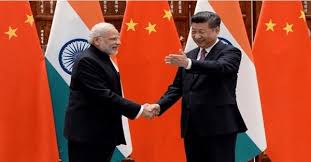The old power structure of world oil markets could be on the verge of a great, potentially far-reaching shift, thanks to India and China. Reports have revealed that the two Asian powerhouses — world’s second and third largest importers of oil — have neared a momentous deal to set up a buyers’ bloc that could dramatically tilt bargaining power in favour of importers.
Following a visit to New Delhi in March by Li Fanrong, deputy chief of China’s National Energy Administration, the two sides created a joint working group on oil and gas. This is the first institutionalized arrangement between the two sides to cooperate in energy though they have several groups on issues such as counter-terrorism and the boundary dispute.
“A meeting between petroleum and natural gas secretary MM Kutty and the vice minister of China’s National Energy Administration, Li Fanrong, was held on March 26 in New Delhi to discuss cooperation in the oil and gas sector,” one of the government officials cited above said.
The Mint newspaper said in a report that the upcoming buyers’ bloc will bargain collectively on oil supplies. Over time, this joint sourcing mechanism could significantly erode OPEC’s sway on all things oil. In the long run, the coming together of the two Asian giants is likely to bode well for other Asian oil importers too. The story says that the buyers’ bloc might push OPEC to “reduce the premiums placed on oil sold to Asian countries”.
Cooperation in energy has been on the agenda for some time – Kutty visited China last October – but the issue gained steam with the US announcing the end of exemptions to sanctions on Iranian oil imports last month.
Iran is important for the energy security of India and China as it is one of the largest suppliers of crude to the two major economies and the supply disruption due to US sanctions has huge strategic and economic costs for the two countries, Indian officials said on condition of anonymity.
The economic interests of India and China have also been threatened by the Trump administration’s announcement on ending preferential arrangements with India under the Generalized System of Preferences (GSP) programme and raising import duties from 10% to 25% on Chinese goods worth $200 billion. New Delhi and Beijing are coming closer to counter trade barriers created by the US that threaten the two major Asian economies, the officials said.
Among issues that India and China can jointly work on is the “Asian premium” charged by the Organization of Petroleum Exporting Countries (OPEC), the officials said. India is also concerned about the impact of US sanctions that kicked in on May 2 and cut off supplies from Iran, which accounted for more than 10% of the country’s oil requirements, and the need to rein in prices, they added.
Officials further added that the new arrangement marks a significant shift from the times when India and China often competed with each other to acquire stakes in oil and gas fields in Asia and Africa. Their cooperation in the field of energy was limited and India is now also looking at the possibility of also getting South Korea and Japan to join the buyers collective so as to create some sort of a grouping of buyers.
Though India has raised the issue of flexibility on the sanctions on Iranian oil, the US has been non-committal. On Monday, visiting US commerce secretary Wilbur Ross said his country will not ensure the sale of cheaper oil to India as the commodity is controlled by private firms.
Though India has turned to alternative suppliers such as Saudi Arabia, the UAE and Kuwait to make up for the lost volumes from Iran, supplies from these sources are unlikely to be as cheap as Iranian oil as Tehran provided 60 days of credit and covered shipping and insurance costs.







